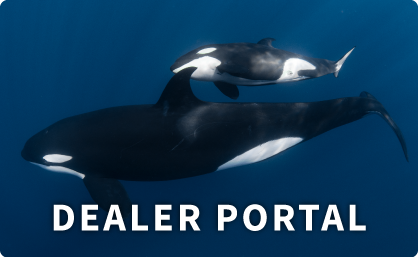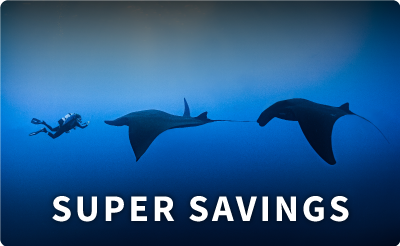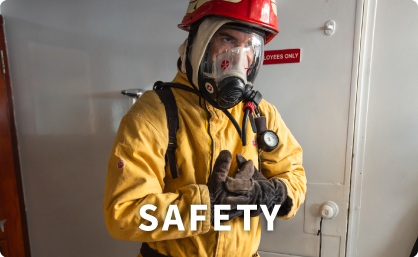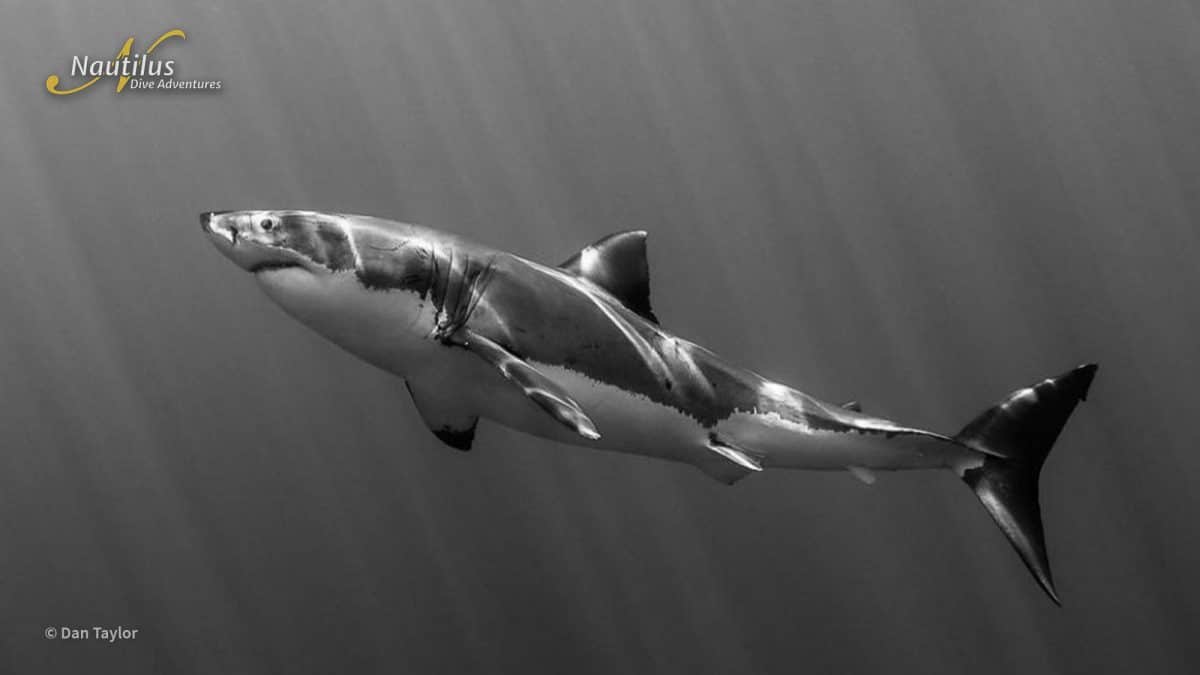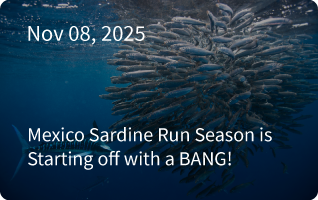We’ve spent almost 20 years observing the great white sharks of Guadalupe. Over time, we’ve seen the population flourish – we’re now up to 367 identified great white sharks, with a whopping 82% sighted more than one year and 36% sighted for more than five years. That’s a lot of sharks. And with so many sharks to observe, we’ve learnt a lot about their behavior. So, whether you want to impress your friends or win the next (very niche) quiz night, discover some little-known, unique facts about great white sharks you won’t find on Wikipedia…
1. How to Identify an Ageing Shark
We now believe that white sharks live for more than 70 years, but did you know that old males get ‘spotty’, but females don’t?
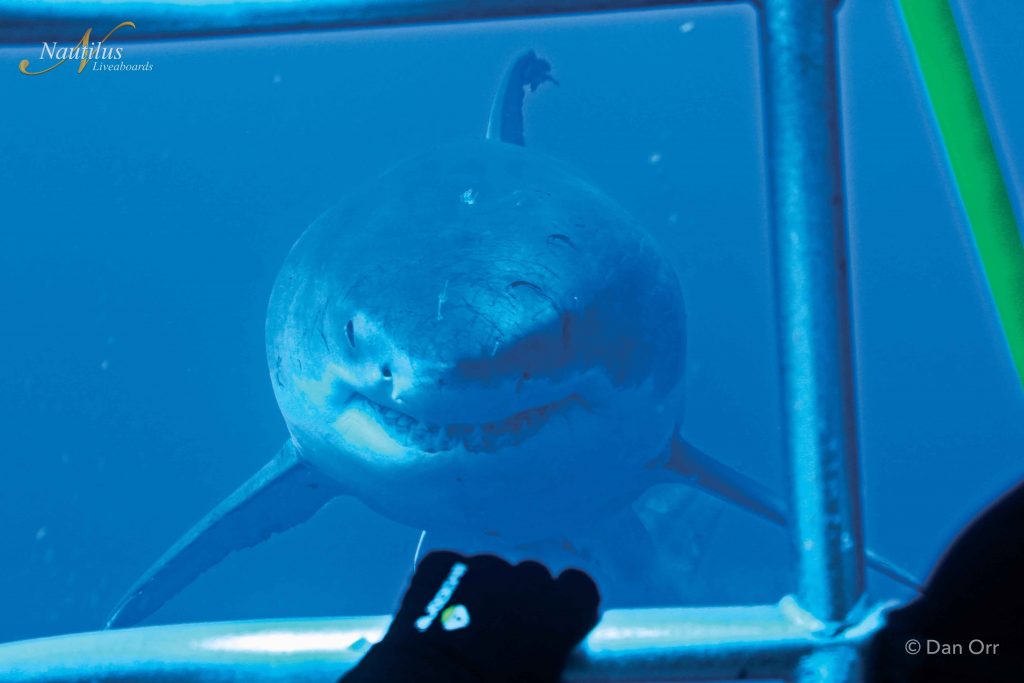
2. Tracking the Movements of Females
While it’s common to see female sharks from the end of August onwards, the big reproductively successful females, aka, the “big mommas,” only visit the island every two years. We think this is because the gestation period of a female great white is 18 months. Females will give birth inshore, for example, around Cedros Island – which unfortunately is where fishing pressure is the greatest. Juveniles will then stay inshore to feed on crabs and fish, as their teeth are softer than adults.

3. Where Do Guadalupe Great Whites Hang Out?
With years of experience at Guadalupe, Captain Mike and our team have come to believe that the best shark diving is where the flat ledge that slopes out from the shoreline ends up abruptly in a sheer cliff to abyssal depths. Our guys anchor several hundred feet in from the drop-off because that’s where we have had the most consistent sightings…
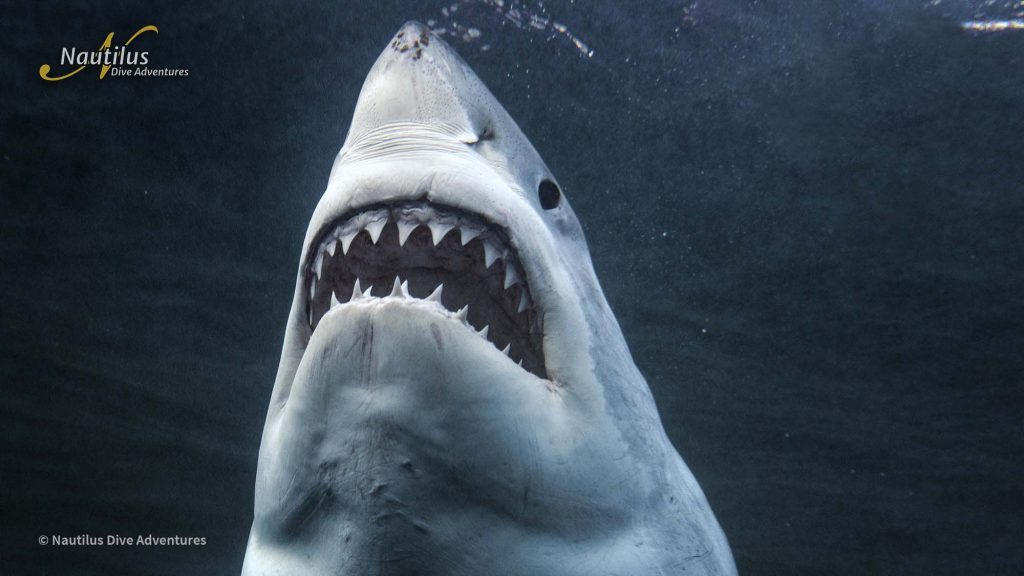
4. Five Rows of Pearly White Gnashers
White sharks have five rows of teeth with the inner rows tightly packed. When a shark loses a tooth – which happens frequently – a new tooth rotates forward from the next row. Scientists believe that a great white might cycle through as many as 250,000 teeth during its lifetime.
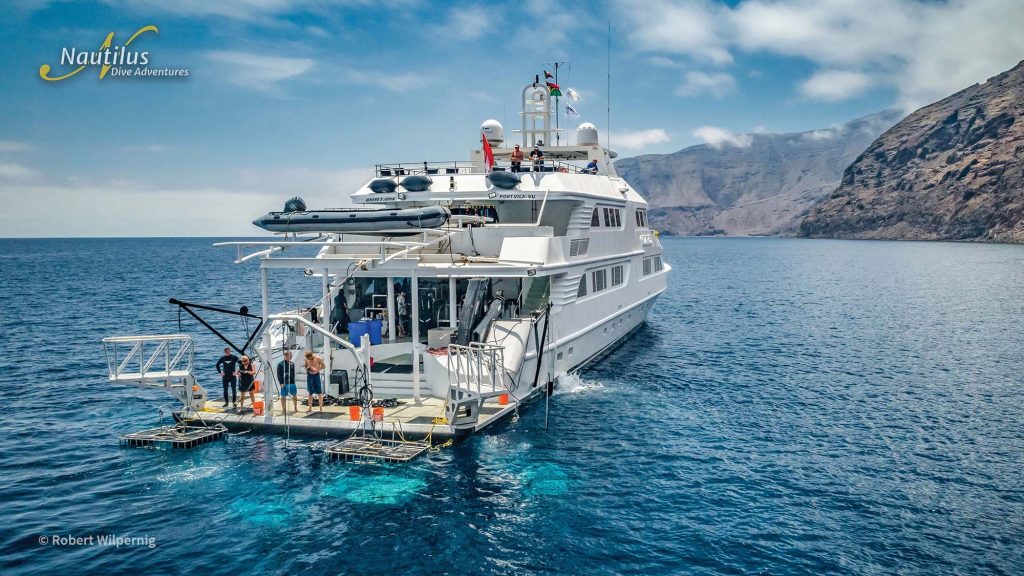
5. Sharks Love Steel
Sharks have remarkable electroreceptors and can sense up to a millionth of a volt. Big steel boats (like ours) are like a giant battery, generating a lot more electrical current than an aluminum, wood, or fibreglass boat. Ergo, steel = the most current = the best sharking!
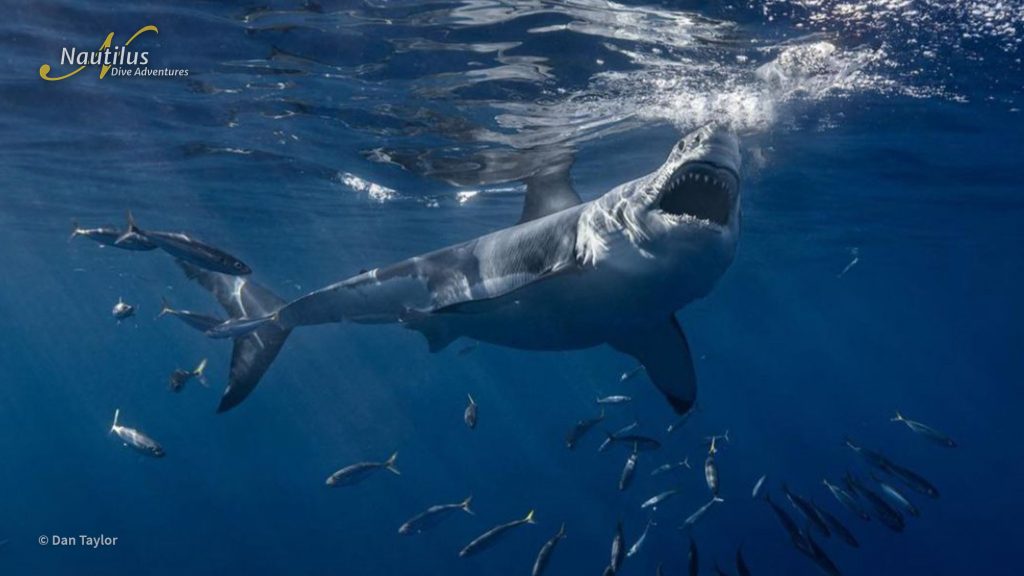
6. Sharks Can Easily Bite Through the Pontoon of An Inflatable Boat and Sink It… We Know This Because It Happened to Us!!
We learnt this in the days where you were allowed to leave inflatable boats in the water. On one particular trip, two big male sharks were engaged with the divers and bait off the back of the Nautilus. A little guy – clearly not the dominant shark – hung way back and appeared to be frustrated. Our very strong, tough 18ft zodiac drifted back towards him where he effortlessly bit through the hypalon rubber like a hot knife through soft butter. Luckily, we were able to drag the sinking boat onto the back deck before it sank…
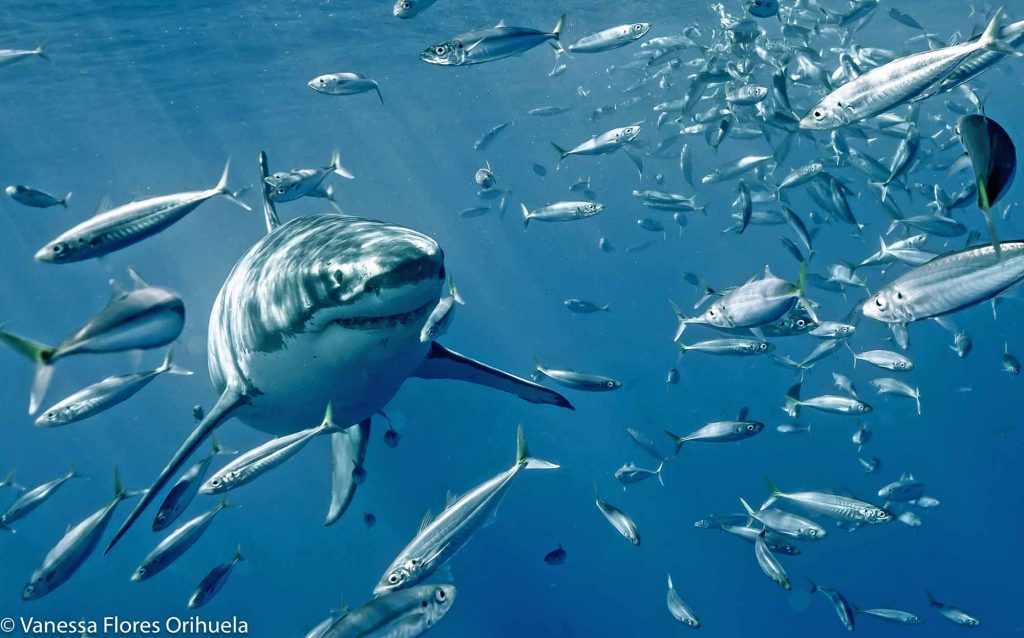
7. When There Is Mackerel, There Are White Sharks
Large schools of mackerel usually congregate off the back of our boats. In almost 20 years of running white shark trips, we have never seen a shark eat a mackerel. Which is odd when you think about all the tasty sushi appetizers hanging around the sharks. Even stranger is that if there are no mackerel, there won’t be any sharks. It becomes eerily quiet…
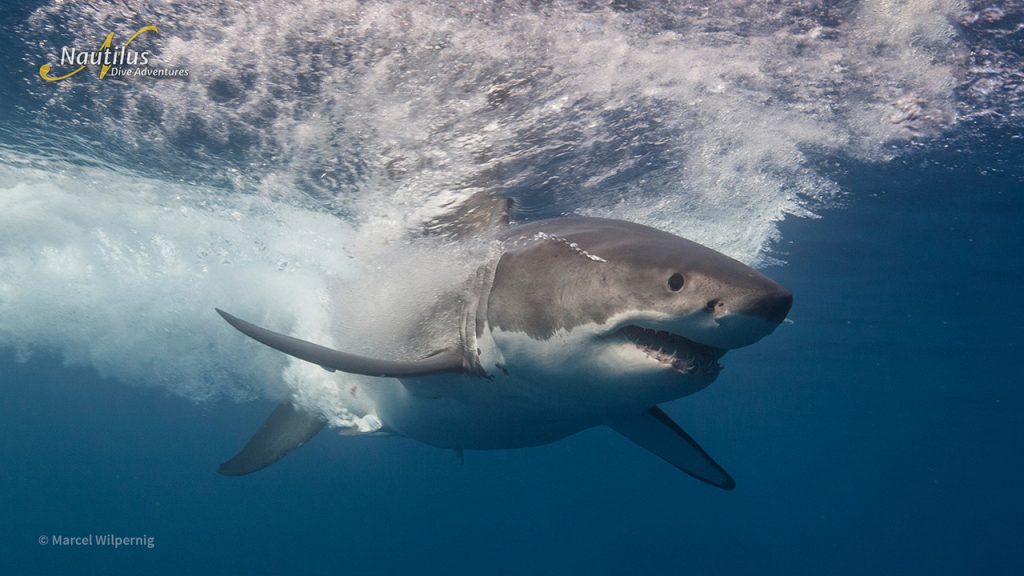
8. Shark Behavior Can Change in a Flash
One particular story comes to mind with one of our favourite sharks, big ol’ beautiful Chica, about 15 years ago. Chica has always been a lovely shark. A really nice shark. And then one day, after years of observing her, she showed up and started gnawing on the props of the Nautilus.
Huh??
She then disappeared into the depths only to re-emerge, sprinting vertically like a freight train, and body slammed the hull of the Nautilus. Was it a display of dominance? Had we irritated her somehow? Did she have a fight with another shark? She then returned to the lovely shark we knew. We still have no idea what caused the outburst.
9. What’s The Real Story on Deep Blue, Reportedly the Largest Great White Shark in The World?
Well, we were there when the famous photo was taken of Deep Blue (sometimes also known as Big Blue). The cage in the photo was ours. The divemaster reaching out to her was our divemaster Joel…
Yes, she is a big shark.
We see “big momma’s” like that in late September through to November, however contrary to the news reports, she was not pregnant. We never see pregnant females at Guadalupe. They return to Guadalupe to breed, after they have pupped inshore around Baja in May and June.
She’s also not the biggest female shark in the world. We see many other reproductively successful females of that size.
And sorry, no, she wasn’t attacking the cage or the divemaster. In fact, quite the opposite. In our earlier days at Guadalupe, we hadn’t yet learned to tightly wrap air lines, safety lines and reserve lines around the lifting cables. Joel reached up to ensure that she didn’t brush against any of the loose lines…
The learning never stops with the absolutely amazing big ‘ol sharkies that we love.
The more time we spend in the water with them, the more we grow to respect them and be humbled by them.
Come and join us!!

